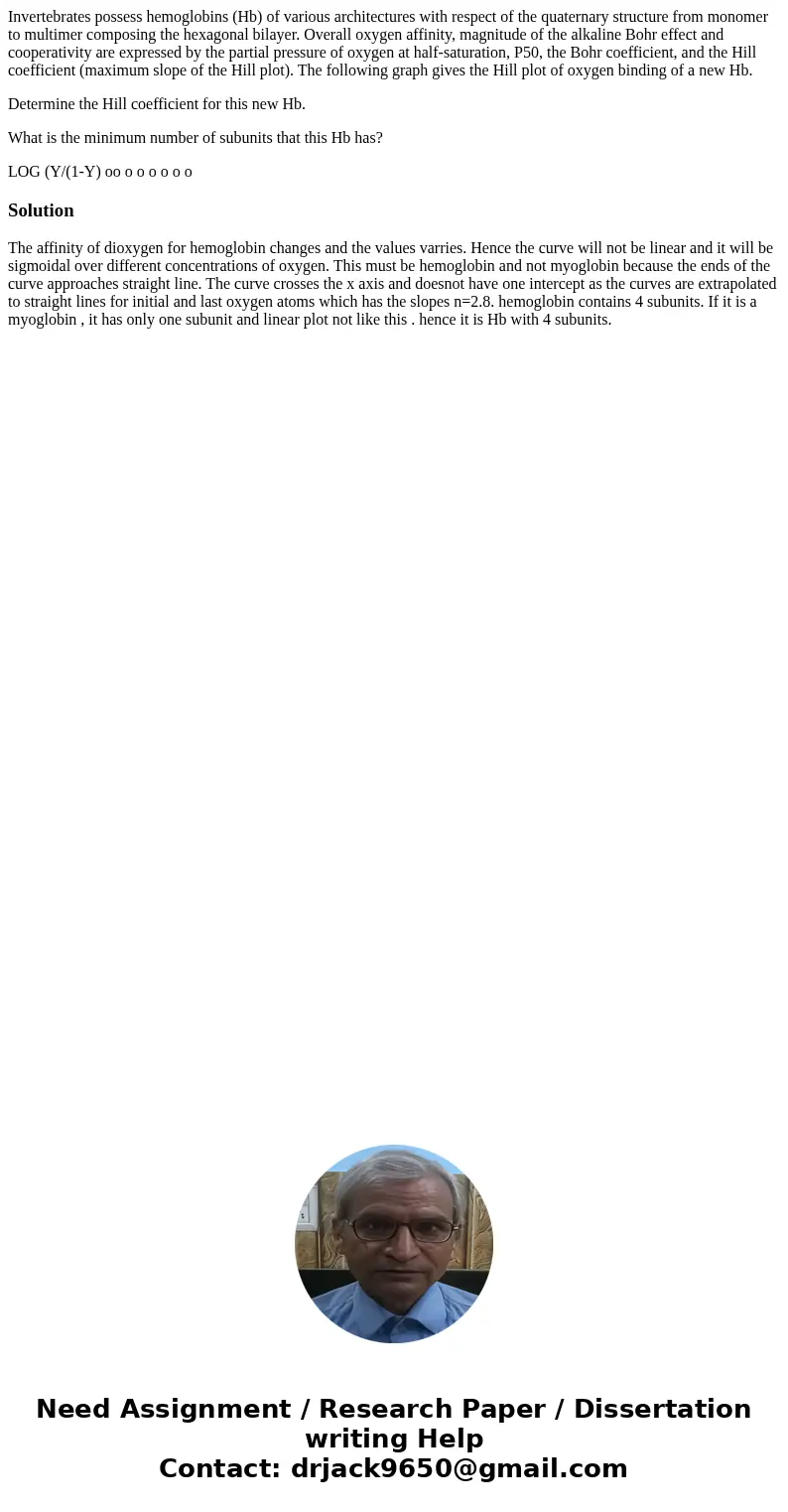Invertebrates possess hemoglobins Hb of various architecture
Invertebrates possess hemoglobins (Hb) of various architectures with respect of the quaternary structure from monomer to multimer composing the hexagonal bilayer. Overall oxygen affinity, magnitude of the alkaline Bohr effect and cooperativity are expressed by the partial pressure of oxygen at half-saturation, P50, the Bohr coefficient, and the Hill coefficient (maximum slope of the Hill plot). The following graph gives the Hill plot of oxygen binding of a new Hb.
Determine the Hill coefficient for this new Hb.
What is the minimum number of subunits that this Hb has?
LOG (Y/(1-Y) oo o o o o o oSolution
The affinity of dioxygen for hemoglobin changes and the values varries. Hence the curve will not be linear and it will be sigmoidal over different concentrations of oxygen. This must be hemoglobin and not myoglobin because the ends of the curve approaches straight line. The curve crosses the x axis and doesnot have one intercept as the curves are extrapolated to straight lines for initial and last oxygen atoms which has the slopes n=2.8. hemoglobin contains 4 subunits. If it is a myoglobin , it has only one subunit and linear plot not like this . hence it is Hb with 4 subunits.
 Homework Sourse
Homework Sourse